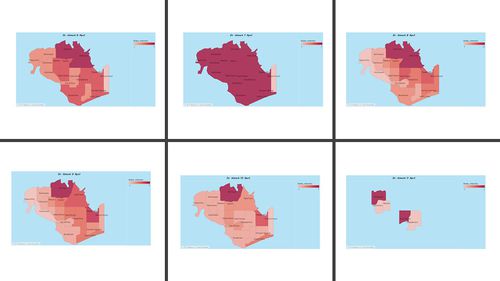From Visual Analytics for Business Intelligence
Jump to navigation
Jump to search
Taks One
| Explanation |
Visual Representation |
| 1.Segmenting type of visitors
description
|
|
| 2.LINE
line
|
|
| 3.Heat Map
HEat
Two terminologies used in the analysis need to be clarified before we move on to the analysis result, paths vs sequences.
In this analysis, a path is defined as a series of categories of gates visited by different vehicles in a chronological order. The path analysis looks at the movement in the reserve at a broader level, for example, how many visitors following the movement pattern of entrance->camps->entrance. In this case, a vehicle moves from entrance1 ->camp1->entrance3 will be taken as being traveled along the same path as a vehicle which moves from entrance2 ->camp1->entrance4. Here, we are interested in HOW the vehicles move around the park.
On the other hand, a sequence is defined as the series of individual gates visited by different vehicles in the chorological order. Taking the same path example given above, now in the sequence analysis we’ll consider the two vehicles as being travelled by different sequences. Now we are interested in WHERE the vehicles move around the park at different time periods.
|
The paths:
The sequences:
|
| 4.Interpretations on "patterns of life" analysis
For the daily patterns, we look at the activities of different types of vehicles at different hours of the day – what time they go to the reserve, what time they leave and where do they go at different hours.
For the longer period patterns, we look at the activities of different types of vehicles at specific day of week, day of month or months.
For the visualization design, an interactive date parameter is introduced to allow the users to switch between different time periods to be used for the analysis easily.
|
|
| 5.Overall visualization design concepts
6 types of visitors, 5 categories of gates and 3 time intervals for analysis – this challenge deem to be an intriguing one. Thus, the visualizations were designed make full use of Tableau’s interactivity such that we can provide a tool for the users to customize their analysis as much as possible. The users are able to filter the different input parameters (visitor type, gates, time), choose the extent of animation (for the paths) and choose what is the area of focus for the analysis by playing with the colors. This will be explained in greater details in the dashboard designs section.
|
